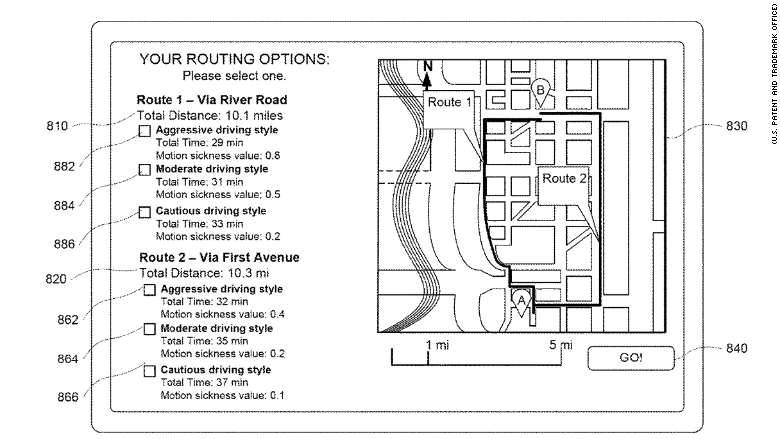
Waymo wants to make sure you never get sick in self-driving cars.
A patent application published Thursday from the self-driving arm of Google's parent company detailed an elaborate system to prevent motion sickness in its vehicles.
The method involves determining routes that could minimize motion sickness. For example, sensitive passengers would be given a relaxed ride on gentle roads. Those people who are more in a rush could select a faster but slightly rougher trip.
The application describes how an alert could be pushed to encourage passengers not to look down or read during the trip. Passengers more sensitive to motion sickness may also be referred to specific seats in the vehicle where they're less likely to feel the effects.
Waymo would examine how severely the vehicle accelerates and sways back and forth to determine the likelihood of motion sickness occurring on a certain route.

The patent states a car could adapt its driving style if a passenger reported feeling uneasy. This could result in leaving a wide gap between it and the car in front of it or switching to a less congested street to avoid stop-and-go traffic.
Waymo, which plans to launch a self-driving service for the public in Arizona later this year, did not immediately respond to a request for comment.
Related: For self-driving cars, car washes are a nightmare
Autonomous vehicles have been hyped as an opportunity to allow people to do work while commuting, but passengers will need to be comfortable.
Waymo isn't the only party interested in addressing motion sickness. In January, University of Michigan researchers received a patent for a wearable headset that flashes lights to prevent motion sickness in vehicles.
In November, an Uber patent application published online described a system of lights in its vehicles that would alert passengers of upcoming turns.

